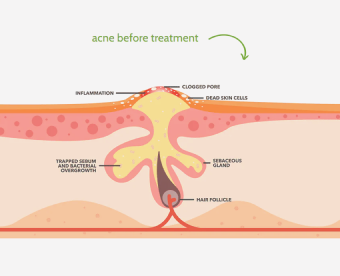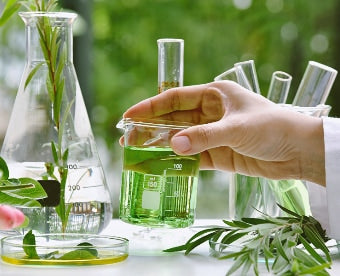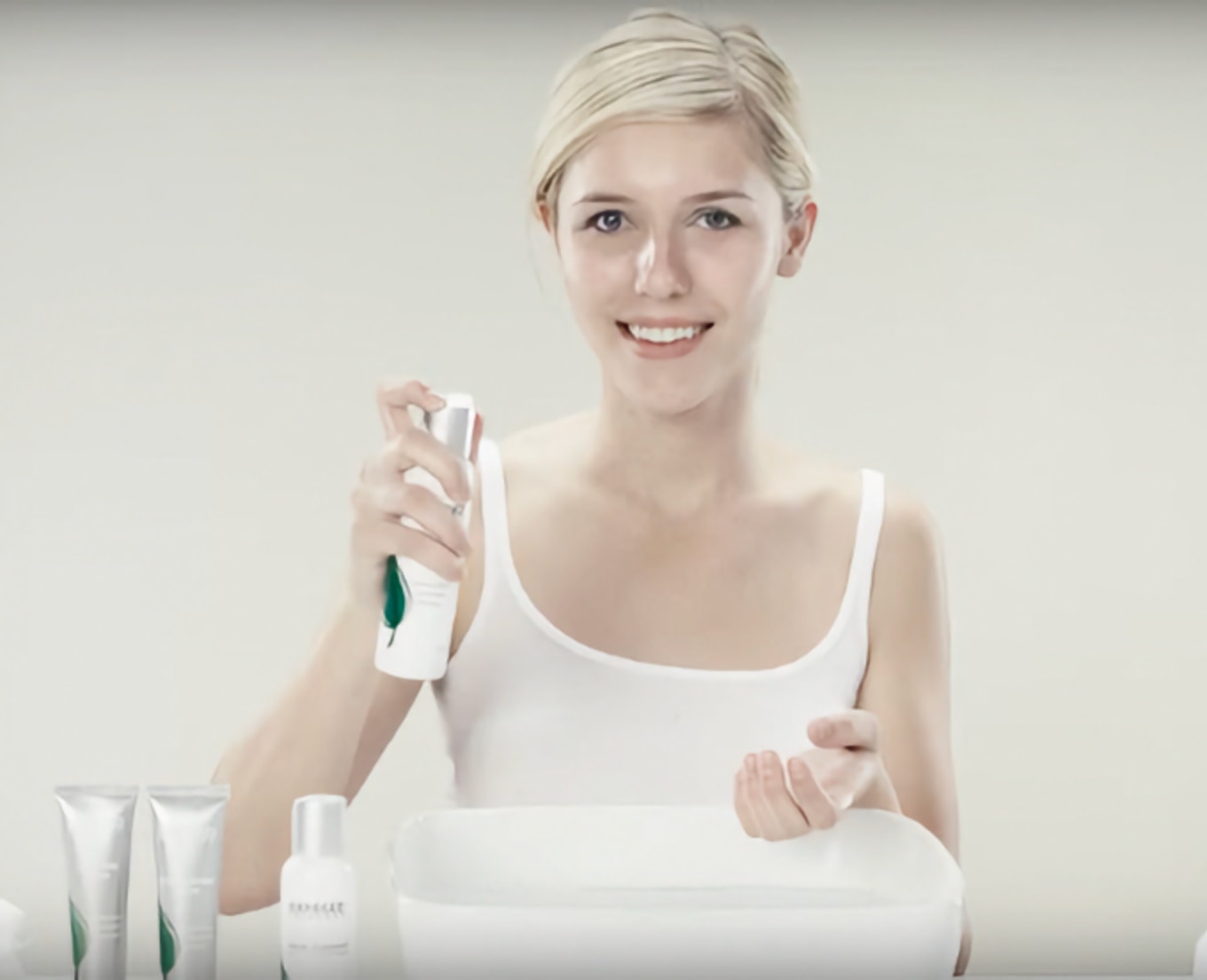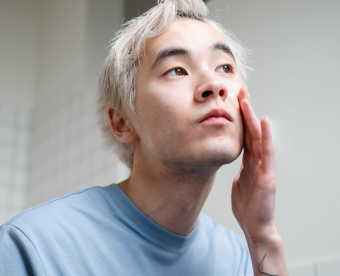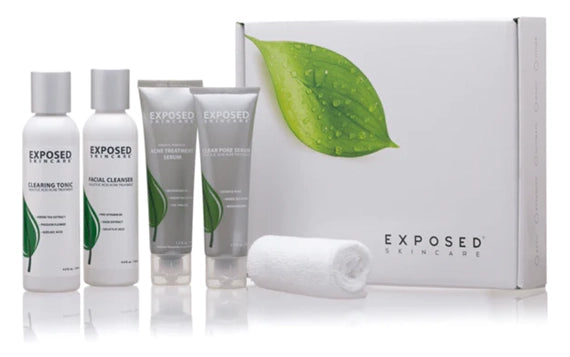If you have noticed some pesky pimples appearing under your breasts, you are not alone. While acne is commonly associated with the face, back, or chest, not many people talk about under boob acne.
However, it is a prevalent issue for many women, and its presence should not be brushed under the rug. This blog post aims to demystify under boob acne by examining its causes, treatments, and preventive measures.
Also read: How to choose the best acne treatment
Biggest Take-Aways:
- Factors like hormonal fluctuations, sweat, and clothing choices can cause under boob acne.
- Prevention strategies include wearing breathable and loose-fitting clothes and maintaining good hygiene.
- For severe acne, consultation with an M.D. may be necessary for prescription medication.
- Exposed Skin Care offers a range of products that can effectively treat and prevent acne, including under boob acne.

What Is Under Boob Acne?
When you think of acne, you probably envision pimples on your face or perhaps back acne. However, acne can occur anywhere, including the sensitive area under the breasts. Under boob acne include various blemishes, such as whiteheads, blackheads, and cysts.
It is essential to delve into its root causes to understand this unique type of acne. The under breast area is a breeding ground for bacteria due to its warm, moist environment, which makes it more prone to acne breakouts.
The Various Types of Under Boob Acne
Under boob acne can present in several ways, including but not limited to the following:
- Whiteheads: Closed clogged pores containing dead skin cells and excess oil.
- Blackheads: Open clogged pores where sebum has oxidized.
- Pustules: Pimples filled with pus.
- Cysts: Painful lumps beneath the skin's surface.
Knowing the type of acne you are dealing with can help you choose the right treatment and help prevent future breakouts.
Causes of Under Boob Acne
Hormonal Fluctuations
Hormonal changes are a significant factor in acne breakouts. The secretion of certain hormones, like estrogen and progesterone, can cause an overproduction of sebum—an oily substance that can clog pores, leading to acne.

Sweating and Poor Ventilation
The area under the breasts can become a breeding ground for bacteria due to excess sweating and inadequate ventilation. Wearing clothing that is not breathable can increase the risk of developing under boob acne.
Irritation from Bras and Shirts
Another factor contributing to under boob acne is irritation caused by bras and shirts. This is especially true for sports bras, which may accumulate sweat and not be as breathable as loose-fitting garments.
Treating Under Boob Acne
Before diving into the treatments, remember that the skin under your breast is sensitive. Using the wrong products may exacerbate the issue.
Spot Treatment with Salicylic Acid or Benzoyl Peroxide
Salicylic acid and benzoyl peroxide are popular acne-fighting ingredients. A spot treatment containing either of these can help unclog pores and treat existing pimples.
Exfoliating with a Gentle Cleanser
Exfoliating can remove dead skin cells, reducing the clog in your pores. Choose a gentle cleanser that is specifically designed for sensitive areas.

Keep the Area Dry
After showering, dry the under breast area thoroughly. Yeast loves moisture, and a wet environment may be a sign of a yeast infection that could cause your under boob acne.
OTC Treatments and Prescription Medications
Over-the-counter (OTC) treatments may also be effective. In some severe cases, prescription medications may be necessary, but these should be used cautiously under proper guidelines.
Prevention: How to Avoid Under Boob Acne
Avoiding under boob acne may seem challenging, but several steps can help prevent this skin condition.
Wear Breathable Clothing
Wearing breathable clothes made of natural fibers like cotton can help keep the area dry, thus reducing the chance of acne breakouts.
Choose the Right Bra
Select a bra that is both supportive and breathable. Moisture-wicking materials are also an excellent choice.
Maintain Proper Hygiene
Cleanliness is crucial. Bathe regularly, especially after intense physical activities that lead to sweating. This will help prevent the accumulation of bacteria, dead skin cells, and sebum.

Adopt a Skincare Routine
Like the skin on your face, the area under your breasts also needs regular care. Use products that contain ingredients designed to treat acne, such as benzoyl peroxide or salicylic acid body washes.
Could Under Boob Acne Be a Sign of Breast Cancer?
Many women worry that any irregularity in the breast area could be a sign of breast cancer. However, acne on the breasts is generally not a sign of breast cancer. In rare cases, skin conditions in the breast area may be a sign of something more severe, but under boob acne is usually just a skin issue, not a cancerous condition.
Benefits of Using Exposed Skin Care for Managing Acne
If you've been struggling with under boob acne, breast acne, or even chest acne, it may be time to consider using Exposed Skin Care products. These products are formulated with a blend of advanced scientific ingredients and natural extracts designed to effectively prevent and treat various types of acne.
Here's how Exposed Skin Care can benefit you:
- Regular Acne and Special Cases: Whether you're dealing with pimples on your breasts or what may look like regular acne, Exposed Skin Care offers tailored solutions that delve deep into the hair follicle and gland to treat the root cause of acne.
- Creams for Specific Areas: Different parts of your body may experience acne differently. Whether it’s breast pimples or pimples on other parts of your body, Exposed Skin Care offers creams that are suited to treat and prevent these blemishes.
- Strict Sourcing Guidelines: The products follow strict sourcing guidelines to ensure that you're getting the best acne treatment without pore-clogging ingredients that could lead to more pimples or worsen existing ones.
- Right Products for You: The range includes various products, meaning you can find the right treatment whether you're prone to getting pimples or have a specific type of breast that is more susceptible to acne.
Adopting an Exposed Skin Care regimen can help manage acne not just on your face but on your breasts and other acne breakouts. This makes it an ideal choice for those who experience acne in different areas and are looking for a comprehensive treatment plan.
Conclusion
Understanding the complexity of under boob acne is the first step in finding an effective treatment. Just like pimples on the breast and other parts of the body, a variety of factors can cause acne in this sensitive area.
Hormonal fluctuations, sweat accumulation, and poor fabric choices are some changes external factors might also cause. Adopting the right skincare regimen is critical for treating this specific type of acne. Products like Exposed Skin Care can effectively combat various types of acne, including pimples on breasts.
Proper hygiene, choosing breathable fabrics, and wearing loose-fitting clothes can help you prevent acne before it starts. It's all about finding the right balance and adjusting your lifestyle to treat boob acne and prevent new breakouts from forming.
Being informed is your greatest tool against acne. Knowing what causes pimples and how to treat them will put you in a better position to make choices that will lead to healthier skin.
FAQs
Q: What are the main causes of under boob acne?
A: Hormonal changes, sweat, and wearing tight or non-breathable fabric can cause this type of acne.
Q: Can tight clothing make my acne worse?
A: Tight clothing can trap sweat and bacteria, leading to more breakouts.
Q: Is prescription acne medication necessary for treating under boob acne?
A: It depends on the severity. Mild cases may be treated with OTC products, but more severe cases may require a visit to an M.D. for prescription treatment.
Q: What preventative steps can I take to reduce acne?
A: Good hygiene, breathable fabrics, and wearing loose-fitting clothes can help prevent acne.
Q: How effective is Exposed Skin Care for treating this type of acne?
A: Exposed Skin Care products are formulated to treat various types of acne, including those on the breast, and can be a part of a comprehensive skincare regimen.

